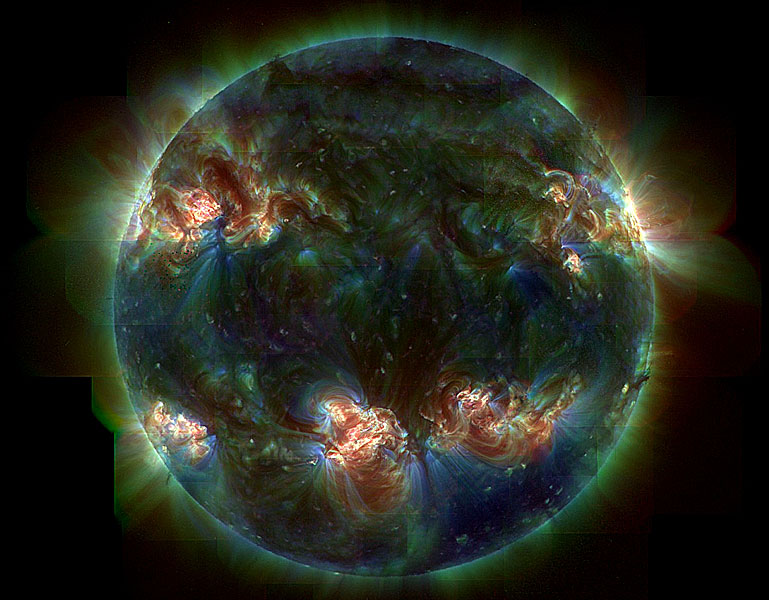 |
Астронет: Астрономическая картинка дня Темное палящее Солнце http://variable-stars.ru/db/msg/1214796/eng |
Credit & Copyright: TRACE Project,
Stanford-Lockheed Institute for Space Research,
NASA
Explanation:
Is this our Sun? Yes.
Even on a normal day, our Sun is
sizzling
ball of
seething hot
gas.
Unpredictably, regions of strong and tangled
magnetic fields arise, causing
sunspots and bright
active regions.
The Sun's surface bubbles as hot
hydrogen gas streams along
looping magnetic fields.
These active regions channel gas along
magnetic loops, usually falling back but sometimes
escaping into the
solar corona or out into space as the
solar wind.
Pictured above is our Sun in three colors of
ultraviolet light.
Since only active regions emit significant amounts of energetic
ultraviolet light, most of the Sun appears dark.
The colorful portions glow spectacularly, pinpointing the Sun's hottest and
most violent regions.
Although the Sun is constantly changing, the rate of
visible light it emits has been
relatively stable
over the past five billion years, allowing
life to emerge on Earth.
Authors & editors:
Robert Nemiroff
(MTU) &
Jerry Bonnell
(USRA)
NASA Web Site Statements, Warnings,
and Disclaimers
NASA Official: Jay Norris.
Specific
rights apply.
A service of:
LHEA at
NASA /
GSFC
& Michigan Tech. U.
